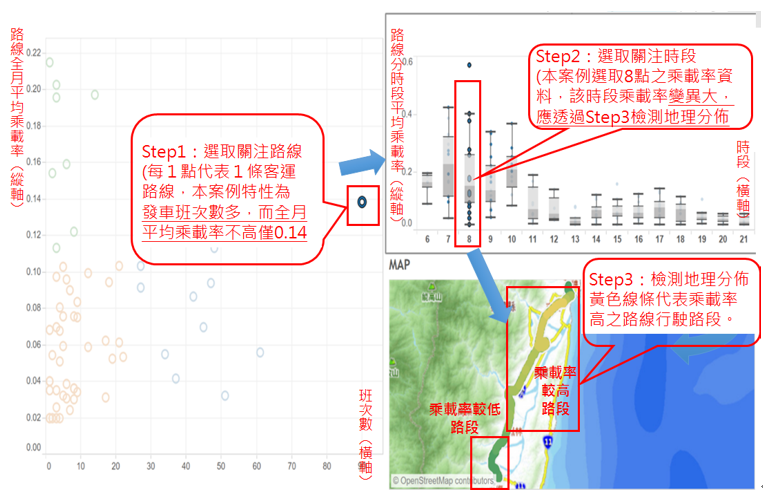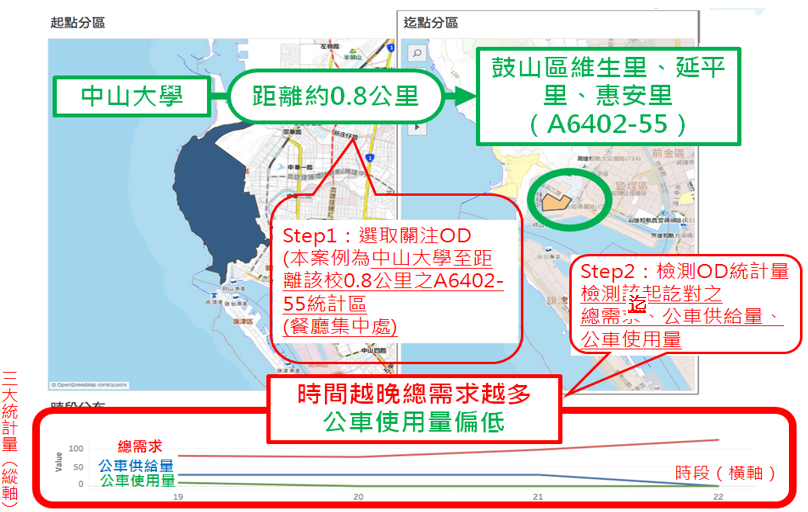Passenger Transport Space-Time Information Big Data Application Analysis
- Date:2019-03-07
- Update:2019-03-07
- Department:IOT
Project Overview:
Analyze the nature of traffic data to provide a reference basis for the decision-making of transportation policy and transportation management, to grasp the distribution of origins and destinations of passengers and route loading conditions, which can provide references for improvement of current condition management efficiency. Therefore, the primary purpose of this study is to analyze and produce a first version of a national passenger transport route loading condition space-time diagram, in order to facilitate public transportation related units to assess route service efficiency through the space-time diagram, and engage the public to grasp service performance of the national passenger transport route. In addition, this study initially attempts to integrate traffic and telecommunications signaling data, using anonymized personal information and zoning statistics to determine and analyze gaspbetween supply and demand in public transportation, in order to provide relevant units with a reference basis to develop highly attractive public transportation services.
Research outcomes:
(1)This study obtained transaction data (of card swipes of passengers boarding and alighting) of about 3000 passenger transport routes and the bus movement information system data of 2017 for all of Taiwan, and completed the first version of passenger transport route loading condition space-time analysis diagram (developed with more complete April 2017 national data), the public transportation relevant units can refer to this diagram to study and propose improvement of bus operations.
(2)This study also initially attempted to compare space-time trajectory between the telecommunication grid data and the public transportation vehicles, and generated a trip origin and destination matrix based on the telecommunication data between two places in Kaohsiung and Hualien in combination with relevant public transportation data (such as routes, run schedules, etc.), attempted to analyze possible gaps in public transportation, and identified the time and space segments where supply cannot meet demand and supply exceeds demand.
Promotion of Outcomes and Benefits:
(1)In December 2017, This project organized an outcome presentation of the trip space-time data analysis and public transportation service application development project, for a audience of regional transportation centers, local governments and consulting companies, to assist them to understand how to apply the project outcomes to ticket and telecommunications data to improve public transportation management operations. In addition, the project outcomes were published and promoted in the sessions of "Bid Data in Transportation Applications" of the 2017 Institute of Transportation Conference.
(2)This project has been cooperating with the Transportation Management Division to research the achievements of "Analysis Diagram of Numbers of Passengers on Board Passenger Transport" and the future direction of promotion in early May of 2018, in order to facilitate regular research and proposals for bus operation improvement strategies for the Directorate General of Highways, Regional Transportation Development Research Center and local governments through the Analysis Diagram of Numbers of Passengers on Board Passenger Transport in the future.









